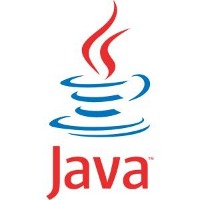Esta web utiliza cookies para obtener datos estadísticos de la navegación de sus usuarios.
Política de privacidad y Aviso legal
| Lun | Mar | Mie | Jue | Vie | Sab | Dom |
|---|---|---|---|---|---|---|
| 1 | 2 | 3 | 4 | 5 | 6 | |
| 7 | 8 | 9 | 10 | 11 | 12 | 13 |
| 14 | 15 | 16 | 17 | 18 | 19 | 20 |
| 21 | 22 | 23 | 24 | 25 | 26 | 27 |
| 28 | 29 | 30 | 31 |
Sabado 12 de Julio 2025
Semana 28
Java script - Java
-Input type submit con evento onclick
-Maneras de salir de un iframe con java script
-Sintaxis de un list array en java
-Consumir un JSON desde PHP
-Producir JSON desde PHP
-Mostrar un tooltip con datos recuperados en jQuery
-Menu desplegable en jQuery
-Llamadas encadenadas de metodos del objeto jQuery
-Funcion ajax en jQuery
-Pasando datos por los metodos GET y POST en jQuery
-Ajax metodos ajaxStart y ajaxStop en jQuery
-Ajax metodo load en jQuery
-Iteracion por los elementos each en jQuery
-Efecto con el metodo toggle en jQuery
-Efecto con el metodo fadeTo en jQuery
-Efectos con los metodos fadeIn y fadeOut en jQuery
-Efectos con los metodos show y hide en jQuery
-Manipulacion de los elementos del DOM en jQuery
-Evento blur en jQuery
-Evento focus en jQuery
-Evento dblclick en jQuery
-Eventos mousedown y mouseup en jQuery
-Evento mousemove en jQuery
-Evento hover en jQuery
-Eventos mouseover y mouseout en jQuery
-Administracion de eventos con jQuery
-Metodos html y html valor en jQuery
-Metodos addClass y removeClass en jQuery
-Metodos attr y removeAttr en jQuery
-Metodos text, text valor en jQuery
-Seleccion de elementos con la clase CSS definida
-Seleccion de elementos utilizando el selector CSS
-Seleccion de elementos por el tipo de elementos jQ
-Seleccion de un elemento mediante el id jQuery
-Nueva manera de programar JavaScript con jQuery
-Que es el jQuery
-Archivo JavaScript externo
-Propiedad screen del objeto window en java script
-Propiedad location de objeto window en java script
-El objeto window en java script
-Eventos onMouseOver y onMouseOut en java script
-Eventos onFocus y onBlur en java script
-Control TEXTAREA en java script
-Control RADIO en java script
-Control CHECKBOX en java script
-Control SELECT en java script
-Control PASSWORD en java script
-Controles FORM, BUTTON y TEXT en java script
-Formularios y Eventos en java script
-Clase Math en java script
-Clase String en java script
-Clase Array en java script
-Clase Date en java script
-Programacion orientada a objetos en java script
-Funciones que retornan un valor en java script
-Funciones con parametros en java script
-Funciones en java script
-Estructura repetitiva for en java script
-Estructura repetitiva do while en java script
-Concepto de acumulador en java script
-Estructura repetitiva (while) en java script
-Operadores logicos or en las estructuras java s
-Operadores logicos (and) en las estructuras java s
-Estructuras condicionales anidadas en java script
-Estructuras condicionales compuesta en jaca script
-Estructuras condicionales simples en java script
-Estructuras secuenciales en java script
-Entrada de datos por teclado en java script
-Variables en java script
-Que es JavaScript
-Lectura y escritura de archivos en java
-Entrada y salida estandar en Java
-Programa para contar vocales de un fichero en java
-Convertidor de divisas en java
-Form con una ventana nueva
-Seleccionar un elemento html mediante su id



